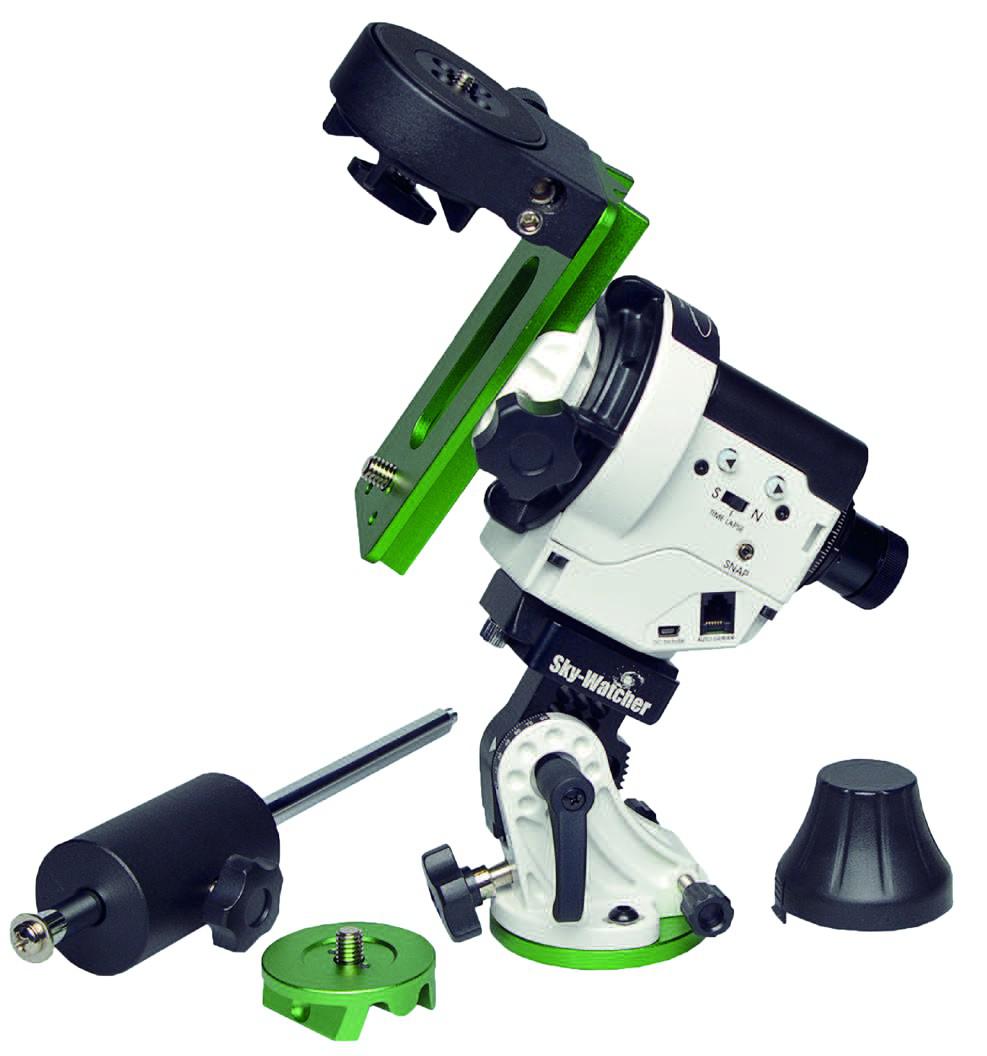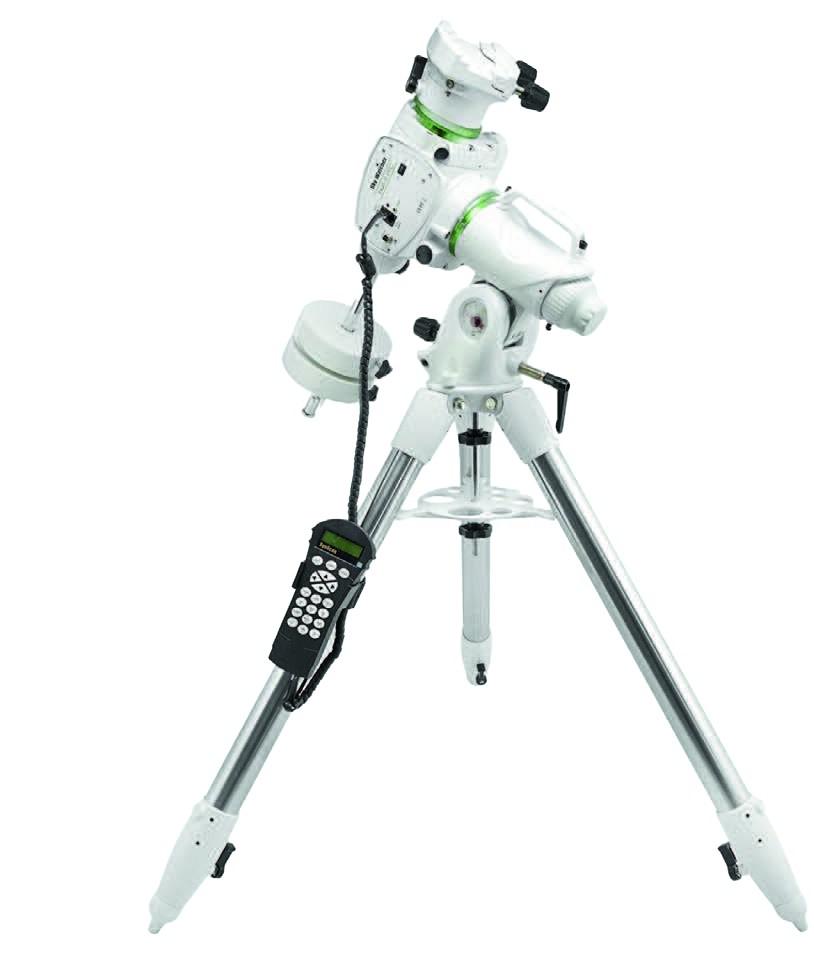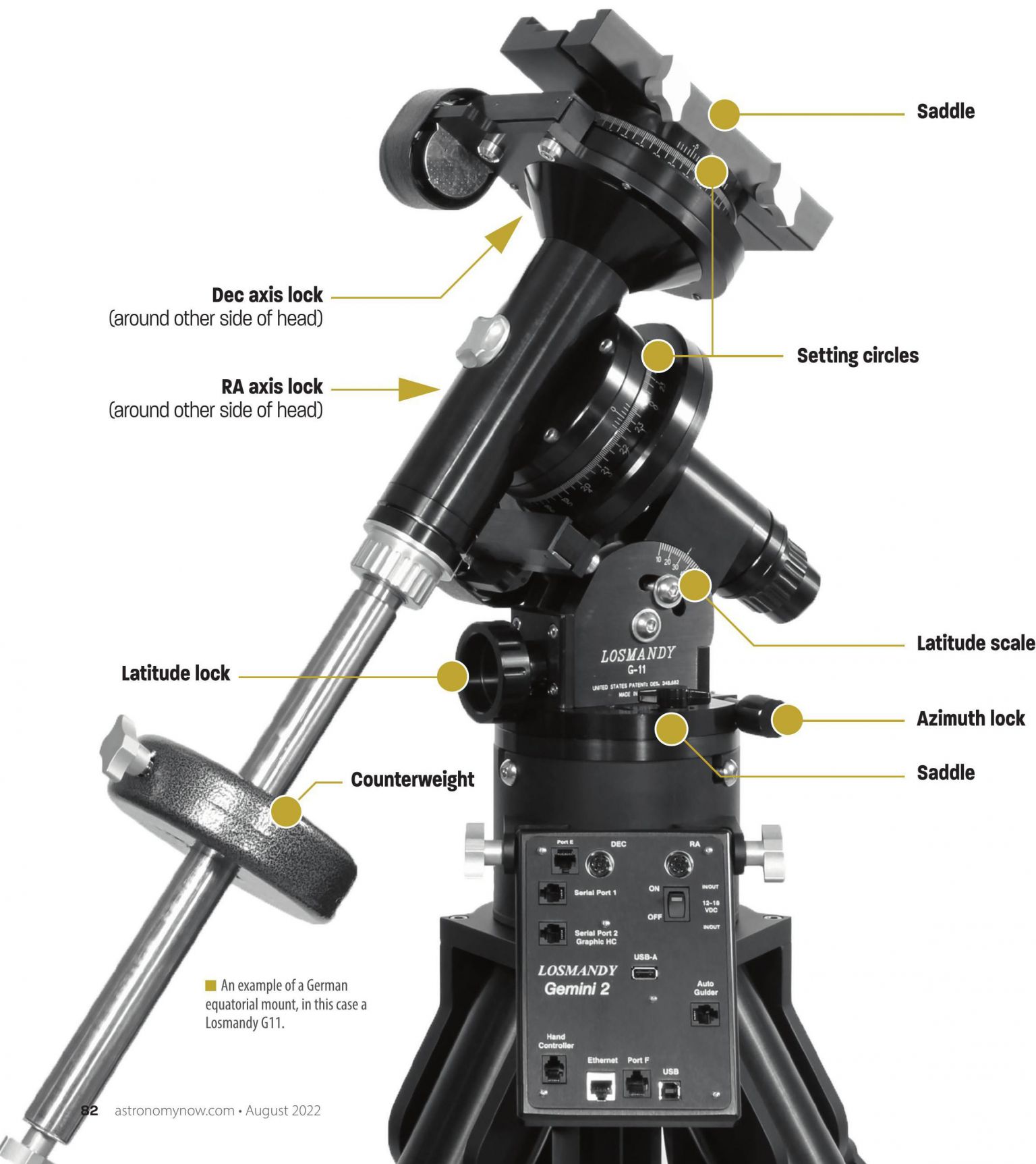
Before looking at a sample of equatorial (EQ) mounts on the market, we should answer three questions: what are they, why are they important and what makes some of them so astonishingly expensive?
An EQ mount is one that places the telescope on a rotating axis parallel with the Earth’s axis of rotation. Although an EQ mount placed at the equator will be offset from the Earth’s polar axis by just under 6,700 kilometres (the radius of the Earth) it can, for astronomical purposes, be considered as being effectively on that axis. It was not until 1838 that Friedrich Bessel was able to confirm stellar parallax, not from across the Earth’s diameter but from across its orbit around the Sun, an average distance of 300 million kilometres. We do not, therefore, need to worry about the fact that our EQ mounts are offset by a few thousand kilometres.
As the Earth rolls east, an equatorial mount rolls west at the same rate, cancelling out the apparent movement of the distant stars. Unlike an alt-azimuth mount, it cancels all apparent movement, including rotation. Observers in the UK will see Orion rise in the east with the hunter figure leaning to the left but, by the time he sets, he will be leaning to the right. The critical feature of an equatorial mount is that it cancels this ‘field rotation’ whereas an alt-azimuth mount does not. Its right ascension platform rotates in the same plane as the observer’s latitude circle, one parallel with the equator, hence the name.
Does this matter? To the visual observer, almost certainly not, but to the long-exposure astrophotographer, it is vital. A target slowly rotating during an exposure cannot give a sharp image. In the past, visual observers also appreciated equatorial mounts because they could either be moved by hand on just one axis, or motorised by an electronics-free clock drive, to follow the sky. Today, though, the inexpensive wonders of microchip computing mean that alt-azimuth mounts can be driven so as to move west and also up or down, to follow an object accurately. Yes, it will very slowly rotate but the eyepiece will not and nor will it rise or fall very much during an observation. This makes for a more comfortable visual observing experience and one that, personally, I greatly prefer.

German or fork?
Of the many equatorial designs, two dominate the amateur market: the German equatorial mount (GEM) and the tilted fork mount. (It is now common for manufacturers to delete one side of the fork, leaving just one supporting arm, but the geometry of the design is unaffected.) An irksome characteristic of the GEM is that it has a counterweight bar on one side and carries the telescope on the other. On reaching the meridian, or at some time after that, the user must carry out a ‘meridian flip’ by swapping the counterweights from east to west and rotating the declination axis by 180 degrees. Imagers using robotic control can automate this process, but it can be avoided altogether by using a fork or arm mount.
In order for the user to align their mount with the Earth’s axis, most manufacturers incorporate a polaralignment-scope, but only a few have found the best method. Usually they ask the user to bubble-level the mount’s base and then align the polar-scope’s reticule by adjusting it to the present time and date, or orientating its tiny star chart with the Plough and Cassiopeia, so placing Polaris in the right spot. This probably lies behind the erroneous notion that an EQ mount needs a level base. It does not. Takahashi, however, use a much better method: the bubble level is on the RA housing and is easily adjusted on a scale to the user’s longitude. The polar-scope reticule, like a planisphere, has an outer circle for the date and a rotatable inner circle for the time. When these are aligned, the position of Polaris is clearly shown on the reticule. Why this wonderful system is not universal remains an exasperating mystery.
Another design variable is the method of driving the mount. Traditionally its motors move the payload via worm gears but there are several interesting alternatives, as we shall see. Breaking news in this field concerns the subtle engineering of the backlash-free harmonic drive, just beginning to find its way onto the market.
Perhaps you are hankering for a good EQ mount, but why are they so expensive? A circle contains 360 degrees or 21,600 arcminutes or, indeed, 1.296 million arcseconds. An amateur astrophotographer might be looking for a tracking precision within 0.5 arcseconds, or 2.592 millionths of a circle, for exposures lasting as long as thirty minutes. That this is possible at all, on amateur budgets, is remarkable and much credit must go to the autoguider, a parallel telescope, or pick-off prism in the main instrument, with its own camera supplying the mount with feedback on its real-time errors so that they can be automatically corrected.
We must congratulate the engineers who have made this possible, forgive the mount its purchase price and take a look at some current offerings.
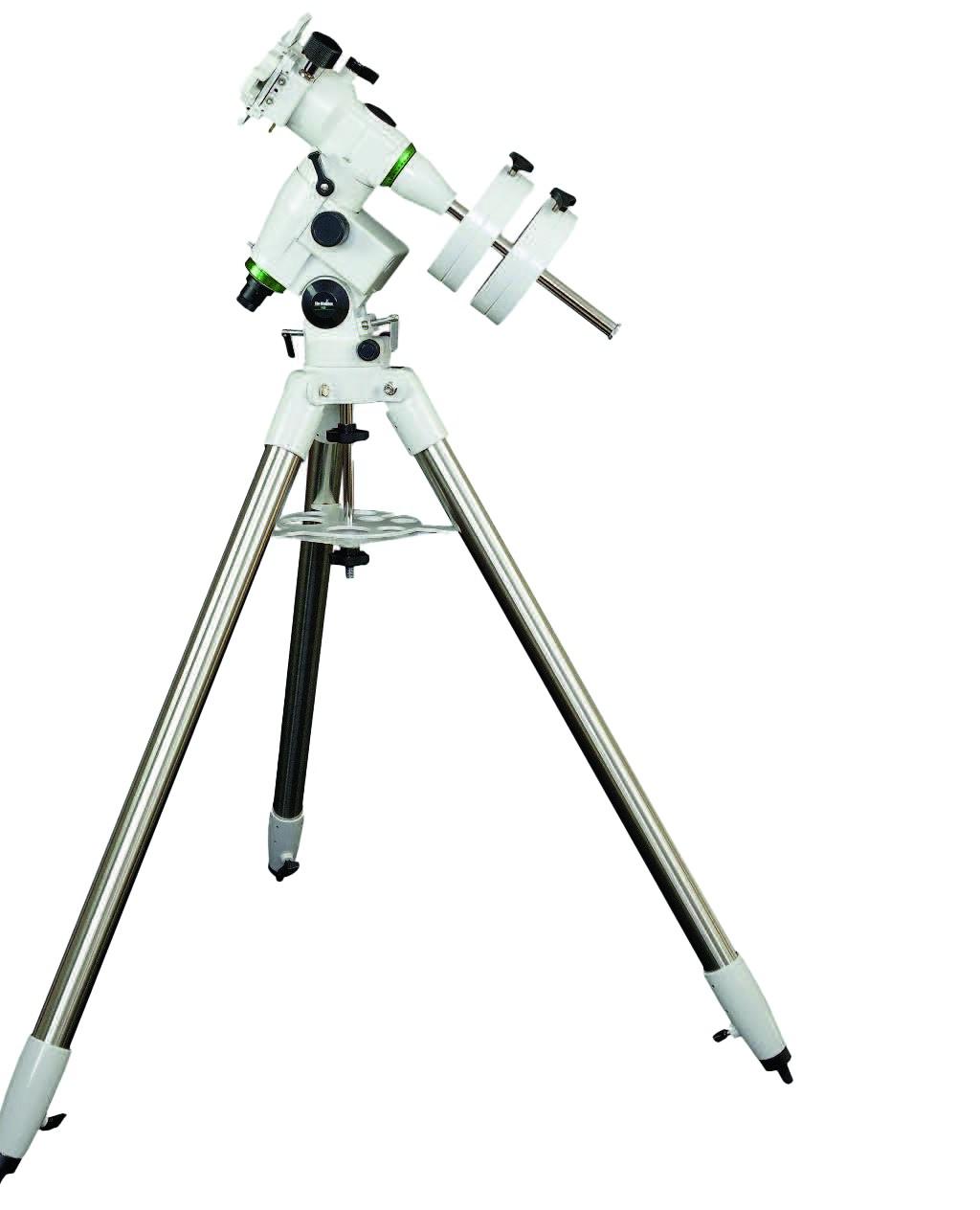
Sky-Watcher EQ Series
Let’s start with that sturdy workhorse, the Sky-Watcher EQ6 and its lighter stablemate, the EQ5, variants of which have been in production since 2001. Probably the most popular imaging mounts in the world, they are a little rough and ready on the inside, attracting a wide range of aftermarket improvements, but they work and have allowed countless imagers to make an excellent start. I’ve had two unmodified examples for around thirteen years and they are still in use. Expect to pay about £1,000 for the smaller ‘5’ model while the ‘6’ starts at about £1,300. Their long production run and popularity means that spares are easily available and there are plenty of YouTube videos on how to repair or improve them. A sound choice fifteen years ago, these mounts still remain a sound choice today. Any prospective buyer should handle both the ‘5’ and the ‘6’ first to avoid being shocked by the weight of the larger mount. Big, strong men will dismiss these concerns but those of us on the smaller, older or more feeble side may not share their confidence!
The ’6’ has an imaging payload of 15 kilograms (perhaps more for the latest versions) but weight bearing is only half of the mountselecting story, with accuracy being the other important half. A very good EQ6, under autoguiding, can manage an average error of 0.5 arcseconds, but you might find it could be twice that. As a rule of thumb, this error needs to be no more than half your image scale in arcseconds per pixel in order to achieve the precision you require. There is no reason to think the ‘6’ is more accurate than the ‘5.’
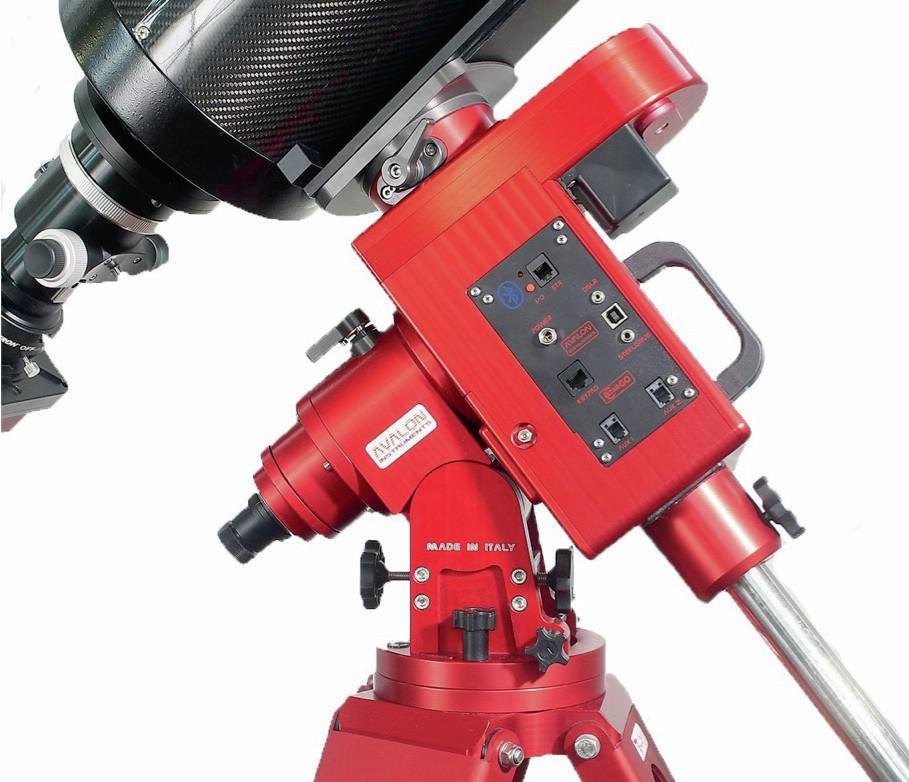
Avalon Linear GEM
Leaping in price to about £5,000, we can find a mount similar in size and capacity to the EQ6, namely the Linear GEM from Avalon Instruments in Italy. What do you gain by paying about five times as much? Firstly, the Avalon mounts are exquisitely machined from solid aluminium billets and come with top quality bearings and a beautiful finish, inside and out. Rough and ready they are not. These mounts are also unusual in using backlash-free toothed belts of the kind often used to drive car camshafts or even the rear wheels of large motorcycles. While they do have a slight elasticity, which is disconcerting at first, their performance is good. I had a new one for a few years and recently bought a second-hand one. The price, however, is high and will probably tempt the well-heeled mobile imager who has the funds for a larger, observatory class mount but who wants the portability of something smaller.

Mesu Mount 200
Another engineer keen to avoid the backlash inherent in worm gears is Lucas Mesu from the Netherlands. His ‘200’ range of mounts raised eyebrows when they appeared because they rely on metal discs, like toothless gear-wheels, each driving the next simply by contact friction. Can this be reliable? It certainly can. My first example arrived here over a decade ago, I had a second one for a while and currently host three more, none of which has ever given a single mechanical problem. Tracking is accurate, the payload is an enormous claimed 100 kilograms and, when mounted on a tilted wedge, there is no meridian flip. This wedge must be specified for a given latitude and has only a limited range of fine adjustment either side of that. This observatory class mount is genuinely just about portable and currently costs a little over £6,000, fully equipped.

10 Micron
By creating an electric motor capable of turning at the sidereal rate of one revolution per 23.9 hours, it is possible to do away with gears altogether and use the motor’s spindle as the mount’s RA axis. ASA of Austria produce examples of this professional-class ‘direct drive’ technology but have withdrawn their amateur-grade products from the market. The motor’s revolution is controlled by absolute encoders that measure its speed and send real-time corrections, so it guides, essentially, on itself. This encoder-based selfguiding is available on other mounts, though, notably from 10 Micron. Atmospheric refraction varies with altitude so encoder-guided mounts must use a model of the local sky in order to allow for small changes in a star’s apparent position. Starting at nearly £10,000, 10 Micron’s technology does not come cheaply.

Avalon M-Uno, portable & Dobsonian mounts
The alternative fork-and-wedge design lost favour when most owners, including myself, found it all but impossible to obtain good results with the popular American Schmidt–Cassegrain telescopes on equatorial wedges. However, good single-arm mounts such as the Avalon M-Uno are now available, offering portable, no-flip tracking from any latitude. Since they do not need heavy counterweights, either, these mounts appeal strongly to the mobile imager.
If all of this is getting a bit much for your wallet we can step back and look at the ultra-portable and far less expensive ‘star tracker’ equatorial mounts that can carry cameras or short-focal-length telescopes and work unguided at those short focal lengths. Starting at under £300, they are produced by Sky-Watcher, iOptron, Vixen and others. They are ideal for those wishing to take ‘land and sky’ shots showing a starry sky above a crisply imaged landscape. (The free software Sequator is designed to help make this possible.) They are also ideal for eclipse-chasers and imagers who like to frame the Moon against a striking terrestrial foreground.
Finally, the visual observer using a Dobsonian telescope can also enjoy spells of automated tracking using an ‘equatorial platform,’ a device that will track the sky for a limited period without the need to have its platform far from the horizontal. An instrument designed to stand on level ground can, therefore, stand on such a platform without risk. They can be ordered from the respected Nottinghamshire telescope-maker David Lukehurst.
All of this tracking technology is a far cry from Lord Rosse’s great Leviathan telescope, which had almost no horizontal movement at all and simply had to be set to a given altitude, allowing the stars to drift past the helpless observer’s view. I think this tells us why the equatorial mount is important.
